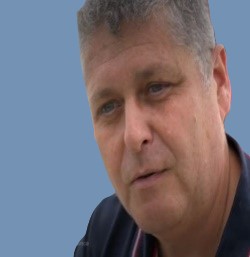Director's Message

Identifying and quantifying contaminants, studying their sources and fates in various environmental compartments (water, air, soil/sediment, biota) are key steps in assessing environmental and health risks. These efforts contribute to the evolution of regulations and the proposal of effective remediation solutions.
It is within this framework and to achieve these objectives that the Environmental Chemistry Laboratory (LCE) conducts its research activities, combining fundamental research and laboratory studies with applied research and in-situ studies. The laboratory relies on the technical and scientific expertise of its two research teams, state-of-the-art analytical equipment, a network of platforms and observatories, and national and international academic and industrial partnerships.
Research requires creativity, inspiration, and dynamism. Training young researchers, both for and through research, is one of our core missions.
Jean-Luc Boudenne, Director of the laboratory, LCE
Scientific Activities
The LCE's domain of activity includes:
- Determining the kinetics and chemical and photochemical mechanisms of contaminant transformation and transfer in air, water, and soils.
- Developing innovative analytical methods for analyzing contaminants in air and water.
In these areas, both fundamental and applied research is conducted. Fundamental studies aim to advance knowledge in environmental analytical chemistry and the chemical and physicochemical evolution of contaminants in environmental compartments (air, water, soil).
This knowledge is used to meet societal expectations regarding the management of natural and anthropogenic ecosystems by supporting environmental quality monitoring through the chemical quality tracking of these environments and their evolution. This knowledge is also used to meet the needs of the economic world for monitoring drinking water and workplace/production atmospheres, optimizing manufacturing processes, and managing gaseous and/or liquid effluents. This is achieved through numerous collaborations with SMEs and/or large groups in various sectors such as microelectronics, petrochemicals, water distribution, etc.
Thus, the LCE has clearly committed to an innovative research path by developing an understanding of environmental chemistry upstream of environmental monitoring. These efforts aim to propose methodologies and/or tools for monitoring, controlling, and evaluating the quality of natural and anthropogenic environments.
Unit Structure
The LCE is structured into two teams:
- Atmospheric Instrumentation and Reactivity (IRA): It focuses on studying the behavior of aerosols in the troposphere and the consequences of their reactivity on atmospheric chemical systems.
- Transfer, Reactivity, and Analysis of Micropollutants in the Environment (TRAME): The team's activities aim to study the biophysicochemical fate of contaminants, identify sources of environmental contamination, and develop the necessary methodological and analytical tools to monitor these contaminants.
The LCE is one of the few laboratories nationally and internationally interested in all three environmental compartments (water, atmosphere, and soil). Inter-team collaborations allow for the study of a contaminant's dynamics simultaneously in multiple environmental compartments, considering transfers and thus providing a comprehensive assessment of the contaminant's fate in the environment. These collaborations are structured around three transversal thematic axes:
- Axis I "Study of Environments" naturally groups field studies and focuses on the chemical and microbiological fate of contaminants and their transfers between environmental matrices.
- Axis II "Reactivity and Transfer" aims to study the reactivity of contaminants in the laboratory to determine reaction kinetics and mechanisms.
- Axis III "Metrology and Analytical Development" aims to develop and validate tools (analyzers and samplers) and analytical methods for monitoring contaminants in various environmental matrices, preferably using online and continuous monitoring methods to achieve a high measurement frequency.
